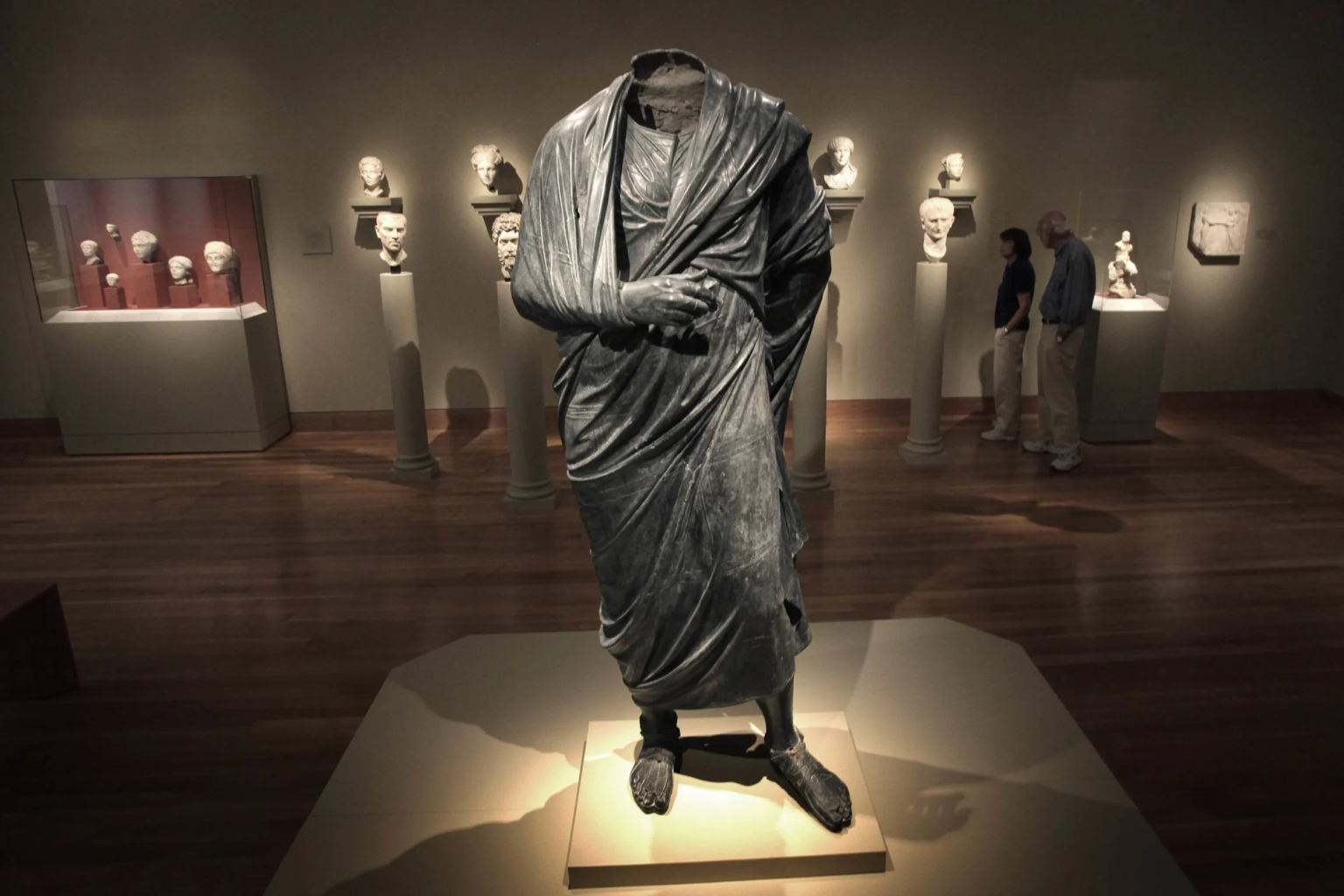The Cleveland Museum of Art in the United States announced that it is returning a bronze statue, valued at $20 million, to Türkiye after a years-long investigation.
The Art Trafficking Unit (ATU) of the Manhattan District Attorney's Office had launched the investigation, which led to the seizure of the artifact and a lawsuit filed by the museum, claiming it was the rightful owner of the piece. The lawsuit was withdrawn after research revealed the true origins of the artifact.
The story dates back to an ancient bronze statue discovered by villagers in Türkiye in the 1960s. It was smuggled into the Western art market by Manhattan dealers and eventually ended up in a famous encyclopedic museum in Cleveland, Ohio.
The statue, which is headless and life-sized, is believed to represent an ancient philosopher and has been prominently displayed in the Greek and Roman galleries of the Cleveland Museum of Art since 1986.
The statue originates from an archaeological site known as Sebastion, in present-day Paphon, Türkiye. It is believed to have been constructed by local leaders as a sign of loyalty to Rome when the empire ruled the region.
The site was built around 50 A.D. and may have been in use for 200 years before being turned to ruins by earthquakes. The bronze statues remained intact underground for two thousand years until local villagers discovered them in the 1960s.
The Manhattan District Attorney's Office recently carried out several other seizures related to Turkish looting claims, including the return of five artifacts from the Shelby White collection, one of the curators of the Metropolitan Museum of Art in New York, to Türkiye in 2022.
These items included a bronze statue of Lucius Verus (a Roman emperor) from Paphon, which was said to be worth $15 million.
The museum indicated that officials from both the museum and Türkiye are considering temporarily exhibiting the statue in Cleveland before it is returned to Türkiye, as well as exploring other areas of cultural cooperation between Türkiye and the museum.

